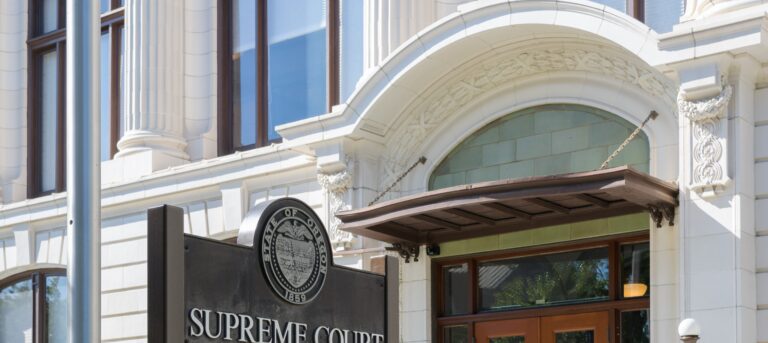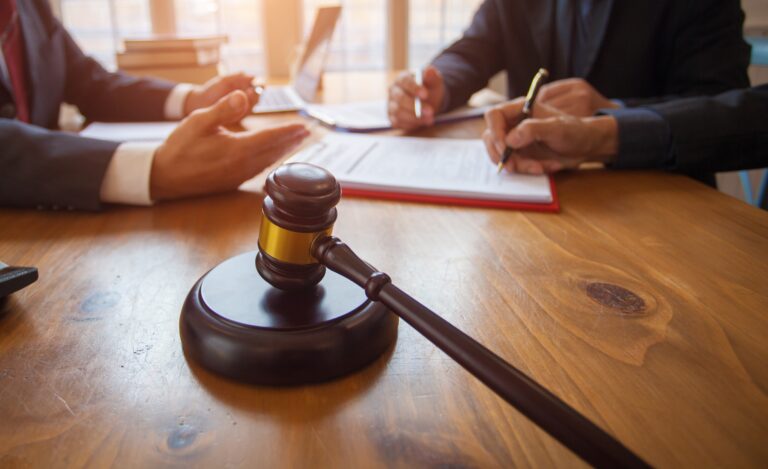Au Contraire: Even the Smallest Contradictions in Deposition Testimony Can Make or Break a Case
Listen to Our Legal Alerts on the Following Platforms:
From the Desk of Brian Schiewe:
Contradictions, big or small, can make or break a case. In this case, defendant King County prevailed on its summary judgment motion by highlighting that not only did the plaintiff contradict their own deposition testimony, but also contradicted video evidence of the accident. So, what was the statement that contradicted plaintiff’s case? The direction she sat in her seat.
Claims Pointer:
Division One of the Washington State Court of Appeals analyzed the testimony of a plaintiff who claimed she was injured when a King County Metro bus clipped her parked car. The Court found that plaintiff’s version of events was so contradictory to video footage of the accident that no jury would believe her, and that plaintiff’s new declaration was inadmissible as it contradicted her sworn deposition testimony. Thus, the Court affirmed the trial court’s decision to grant King County’s motion for summary judgment.
Berry v. King County, No. 82263-2-I, 2021 Wash. App. LEXIS 2554 (Ct. App. Nov. 1, 2021).
Facts:
On September 16, 2016, Virginia Berry (“plaintiff”) was sitting in her parked car when a King County Metro bus hit her driver side mirror and scraped the corner of her front bumper. This collision was recorded by a camera on the bus. After the accident, plaintiff claimed that the collision caused her to hit her head on the side window and rearview mirror resulting in a concussion. Plaintiff filed a negligence action against King County (“the County”).
The County filed three different summary judgment motions. First, the County argued that the video footage from the bus showed that the collision did not cause any movement to plaintiff’s vehicle – thus providing no mechanism for injury. The trial court, while agreeing that the video showed no movement of plaintiff’s car, denied the motion, indicating that expert testimony was needed to establish the collision did not cause plaintiff’s injuries.
The County’s second motion included a declaration from a biomedical engineer and accident reconstruction expert stating that any jostling caused by the collision would be minimal and no contact with any interior components would result. Plaintiff then argued that the collision was extremely terrifying and caused her to “violently shake from side to side”. The trial court denied the motion concluding that there was still an issue of fact as to whether plaintiff could have been so startled by the collision that she hit her head.
The County filed its third motion for summary judgement. This time the County submitted a revised declaration from the expert that reiterated his prior opinions, but also agreed that plaintiff could have experienced a startle response. But, the expert testified, any such startle response would cause an individual to pull their head close to their body and bring their hands to their head rather than cause lateral movement of the body. The expert concluded that there was a zero percent chance a startle response would cause the injuries plaintiff alleged. The trial court granted the motion for summary judgment and plaintiff appealed.
Law:
Washington case law has long held that a party is bound to their deposition testimony thus that party cannot fabricate a declaration to stave off summary judgment. This was first established in Marshall v. Ac&S, Inc., 56 Wn. App. 181, where a party stated that he had known about his asbestos related disease during a doctors visit in 1982 in a prior deposition, but later stated he had not known about the asbestos related disease until 1985. The point at which this party had known about the disease was important to determine if the claim was time-barred by the three-year statute of limitations for the action. The court held that the party could not manufacture an issue of material fact concerning when he learned of his illness and that he was bound by his prior deposition, which meant that the claim was indeed time-barred. Berry, in essence, expands Marshall and its line of cases to include video evidence.
Analysis:
The Court of Appeals began its analysis by acknowledging that while evidence must be viewed in the light most favorable to the nonmoving party, there can be no true dispute of fact when the nonmoving party’s evidence is “blatantly contradicted” by video evidence. Scott v. Harris, 550 U.S. 372, 379, 127 S. Ct. 1769, 167 L. Ed. 2d 686 (2007). The County’s video evidence clearly shows that plaintiff’s car did not move when the bus struck it. Furthermore, the County produced expert testimony that any motion that could result was not due to the collision, but rather by the plaintiff’s own volition. The Court found that plaintiff’s testimony was so contrary to the video footage that no reasonable juror would accept her version of events, thus, the video evidence establishes an absence of an issue of fact.
Plaintiff argued that her third declaration, where she explains that she was so startled by the impact that she hit her head, is sufficient to create an issue of fact. The Court disagreed stating that the existence of any genuine issue of material fact is negated when a party has given clear and definite answers in their deposition. Marshall v. AC&S, Inc., 56 Wn. App. 181, 185, 782 P.2d 1107 (1989).
The Court took issue with the fact that after the trial court suggested it was possible plaintiff’s injury resulted from a startle response, plaintiff testified for the first time that she was sitting sideways in the driver’s seat before the impact startled her causing her to fall back and hit her head on the window. This testimony directly contradicted plaintiff’s previous deposition where plaintiff unequivocally testified that she was sitting facing forward. Because her revised declaration testimony contradicted her deposition testimony, the Court found it inadmissible, thus, no genuine issue of fact was created on causation.
The fact that no jury would believe plaintiff’s version of events after seeing the video footage, coupled with plaintiff’s inability to establish causation through admissible evidence, the Court affirmed the trial court’s granting of the County’s motion for summary judgment.
The Big Picture:
Contradiction kills a case. Contradictions in deposition testimony and revised declarations can result in those declarations being inadmissible in court. Thus, it is important to be on the lookout for any contradictory statements—even as small as the direction someone sat in their seat. Further, video evidence of the accident can be key to show that a party’s deposition is contrary to the reality of the incident and thus unbelievable to a jury.

















